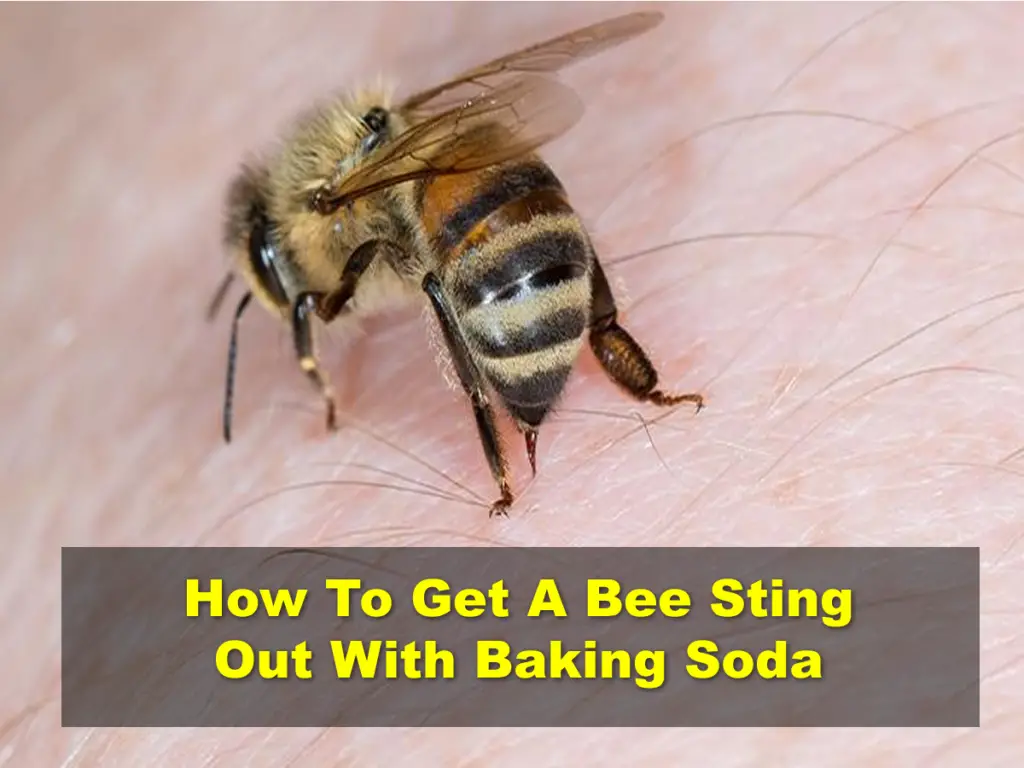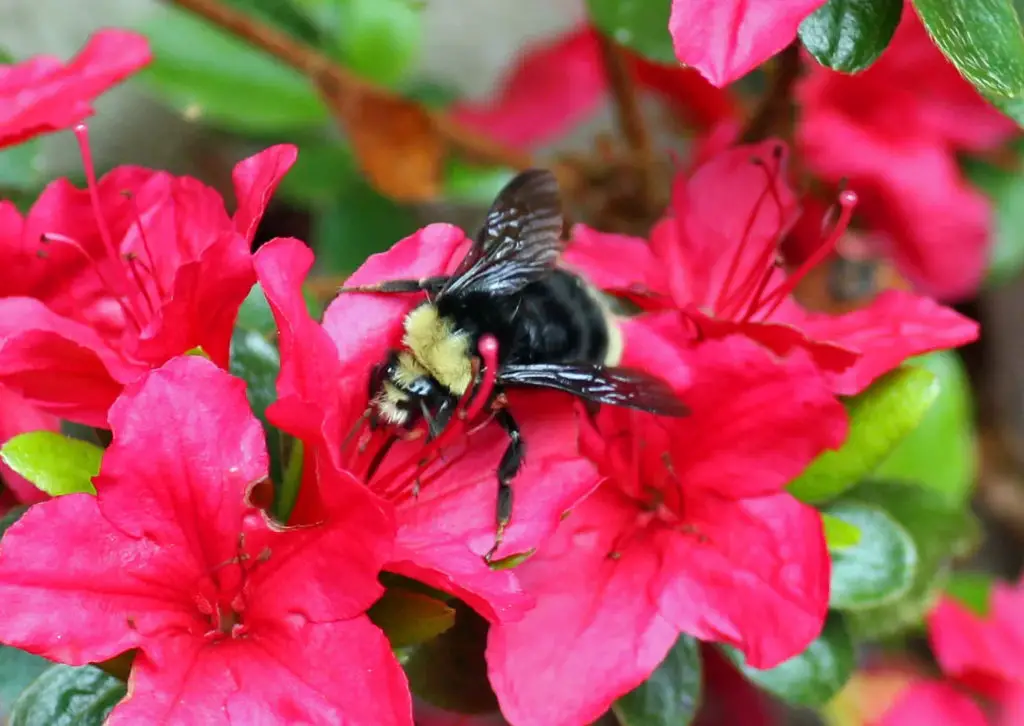Affiliate Disclaimer - As an Amazon Associate I earn from qualifying purchases.
It supports the website. So, Thank you
Getting stung by a bee is no fun. Some people may have an allergic reaction but for most, the sting can still cause unpleasant symptoms like swelling, redness, and pain. There are many home remedies for bee stings and in this guide, I’ll be looking at how to get a bee sting out with baking soda.
Baking soda is effective against bee stings as it is known to counteract the acidity of the bee venom and therefore reduce symptoms.
If you’re reading this after having sustained a bee sting, then this method might be what it takes to reduce your suffering.
Table of Contents
Why Do Bees Sting?
Bees are normally pretty laid-back insects and are merely interested in going about their bee business. They don’t typically sting humans unless they feel threatened so letting them get on with what they’re doing is the best way to avoid an unwanted interaction.
However, bees are extremely territorial creatures, especially around their nest which they will defend till the death if they need to.
Even when humans aren’t intentionally trying to attack a nest, bees might think otherwise and this is often when they go into self-defense mode.
What’s more, if a bee is buzzing around your backyard and you get too close or make it feel threatened, it’ll do whatever it takes to avoid the supposed threat. On top of this, we have to keep in mind that bees emit a pheromone when they sting which attracts other bees to come to its aid.
So, if you’re stung once, there’s a good chance that other bees won’t be far behind.
How Does Baking Soda Get Rid Of Bee Stings?
It’s important to remember that baking soda can alleviate the symptoms of a bee sting but it cannot remove the actual stinger from your skin.
Using the baking soda method that I’ll describe later in this guide is intended to soothe the area and prevent irritation or pain. But how does this work?
Well, baking soda is an alkaline substance whereas bee venom contains acid. You probably remember from your high school science classes that alkaline cancels acidity out so applying baking soda is a way of ‘deactivating’ the bee venom found in the sting.
What’s more, baking soda has anti-inflammatory properties and is a natural pain reliever so it will help counteract any superficial symptoms you may be experiencing. And if that wasn’t enough, baking soda also contains a compound that makes it antipruritic; essentially meaning that it’ll stop any associated itching.
How To Remove A Bee Sting Using Baking Soda
On TikTok recently, the baking soda bee sting hack has been everywhere. You may have heard about how effective it is and, if you’ve just been the victim of a bee sting, you’re probably keen to try it out. Well, wonder no more; I’ve got some simple step-by-step instructions on how to do it.
- Start by removing the stinger from your skin. The best way to do this is to use a pair of tweezers. However, it’s also very common to take a credit card (or other similar-shaped object) and run this over the surface of the sting which will eventually pull it loose.
- Next, be sure to thoroughly clean the area using soap and warm water. This will remove any potential bacteria and prevent infection further down the line.
- You’ll now need to mix around one-quarter of a cup of baking soda (make sure it’s aluminum-free) with two to three tablespoons of water. The idea is to create a paste so if you need to add more water or baking soda to do this, then go ahead.
- Once you’ve mixed your paste, you should apply it to the sting and allow it to work for around 15 to 20 minutes.
- You can then remove the paste but feel free to reapply it throughout the day if you notice any further pain or irritation.
How Long Does A Bee Sting Take To Heal?
Even immediately after you remove the stinger, you’ll start to notice a slight reduction in your symptoms since there will no longer be a flow of bee venom entering your body. However, it usually takes a few hours for the pain to subside to a markedly noticeable level.
That said, it’s not over yet as bee stings can take between seven and ten days to fully heal. During this time, you will notice pain, swelling, and redness as well as some itching. But as time goes on, these symptoms will gradually decrease.
If you have been stung by a bee and notice that your symptoms are not subsiding after a week or so then I would advise seeking medical attention.
A Word Of Caution For Allergy Sufferers
In the United States, it is thought that around 2 million people are allergic to bee venom. For these individuals, the symptoms of a bee sting are much more severe and in the worst cases, can even lead to anaphylaxis and potentially death.
If you are stung by a bee and notice any of the following, then this should be treated as a medical emergency.
- Difficult breathing
- Dizziness
- Nausea and/or vomiting
- A hoarse voice
- Extreme itching or swelling
- Flushed skin
- Swelling in the tongue
- Fever
- Loss of consciousness
Some people do not know that they have a bee sting allergy if they have never been stung before. If this is the first time you are stung then it’s even more important to keep an eye on your symptoms and get medical help if you notice anything unusual.
In some cases, anaphylaxis can occur just minutes after being stung so it’s vital that you don’t waste any time.
Avoiding Bee Stings In the Future
While being stung by a bee is typically a minor nuisance for most people, the pain and associated irritation is something we’re all keen to avoid. The baking soda method is a great way to mitigate your symptoms but, as they say, prevention is better than cure.
There’s no getting away from the fact that we have to share the world with bees so avoiding them completely can be difficult. But there are some things you can do to deter them although, when you are confronted with them, just let them get on with what they’re doing and they’ll soon leave.
- Avoid leaving food and drink (especially sweet stuff) uncovered outdoors. I’m not saying you can’t enjoy some al fresco dining but use your common sense and get rid of leftovers as soon as possible.
- Place potted bee-deterrent plants around your outdoor seating area. Things like citronella, mint, and eucalyptus are particularly effective.
- Bees are attracted to colors within the green, blue, yellow, and purple spectrums so avoid wearing these colors. They cannot see red so this is a great way to avoid drawing attention to yourself.
- Heavily scented cosmetics and perfumes, especially floral ones, can be attractive to bees.
- If a bee does approach you, don’t panic. Bees will see this alarm as a threat and will be more likely to respond to it by stinging.
- Where bees are a problem in the garden, try creating a specific bee-friendly area where they can congregate that’s well out of the way of your own relaxation spots. Add bee-friendly flowers, nesting areas, and a water source. The bees will be drawn to this area and will be more likely to leave you alone.
Final Thoughts
Bees are everywhere. In North America, there are more than 4000 species and many of them have the ability to sting. In most cases, bees are reluctant to sting and will only do so when they feel threatened.
If you’ve been active on social media over the summer, you may have seen the hack on how to get a bee sting out with baking soda. While this won’t actually remove the stinger (you’ll need to do that manually first), the alkaline in the baking soda will neutralize the acidity of the bee venom and reduce your symptoms.
This is an easy at-home remedy that can be performed as many times as necessary. But usually, you’ll find that your bee sting wound will have cleared up in a little over a week.




